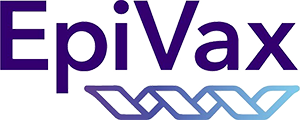By Richard Asinof
WASHINGTON, D.C. – The vaccine on demand technologies pioneered by EpiVax received a major shot in the arm when the Blue Ribbon Study Panel on Biodefense released on Oct. 28 urged a dramatic shift in the government’s strategic approach to preparedness from potential bio threats and flu pandemics.
Instead of relying on the previous strategy of stockpiling vaccines, the panel, chaired by former head of the U.S. Department of Homeland Security and former Sen. Joseph Lieberman, endorsed making major new strategic investments in medical counter measures.
The recommendations called for a major new infusion of federal resources: 10 percent of all new National Institutes of Health “innovation” funds, and 10 percent of all Biomedical Advanced Research and Development Authority, or BARDA, funds be allocated go to fund innovative platform technologies, such as those developed by EpiVax.
All four recommendations made by EpiVax founder, CEO and chief science officer Dr. Annie De Groot when she had testified before the panel in April of this year were adopted in the report. [See link to ConvergenceRI story below.]
These included:
• Encourage the U.S. Food and Drug Administration to develop a strategy for approving platform approaches to making “vaccines on demand.”
• Fix the broken SBIR (Small Business Innovative Research) program at the NIH, prioritizing innovation over incrementalism in medical countermeasure development.
• Require BARDA to devote no less than 10 percent of its annual budget to funding new, innovative technologies that will lead to faster response and recovery than current vaccines achieve.
• Invest in innovator research in the U.S.
“We congratulate the Blue Ribbon Study Panel on their comprehensive review and echo their call for prioritizing innovation over incrementalism in medical counter measure development,” De Groot said in a news release. “Lives are at stake, and money is being wasted on products and processes that simply do not work,” she continued. “As this report shows, there is a better way.”
EpiVax has been at the forefront of the ‘vaccines-on-demand’ movement for the past decade.
The Providence-based company uses special computer-driven tools that have been successfully validated in a number of published studies. The team of scientists at EpiVax has already created several such ‘vaccines-on-demand’ for the Defense Advanced Research Projects Agency, or DARPA, at the Department of Defense, under “stress test” conditions.
“We don’t really get to choose what we have to prepare for [in terms of biothreats],” said Secretary of the Navy Richard Danzig, saying that vaccines on demand address concerns raised by the blue-ribbon panel.
Good timing
The release of the blue ribbon panel report comes at a fortuitous time for EpiVax: the ninth annual Vaccine Renaissance is convening this week in Providence from Nov. 4-6, providing a nexus for vaccine developers and highlighting the crucial role vaccines play in human health.
The conference, hosted by the University of Rhode Island’s iCubed, the Institute for Immunology and Informatics, will bring together some of the world’s most renowned vaccine and immunology researchers. Among the guest speakers this year are Mark Poznansky of the Harvard Medical School, Manon Cox of Protein Sciences, and Sohail Ahmed of GSK.
In another serendipitous development, the Brookings Institute, which is moving ahead with its strategic analysis of Rhode Island’s future economic strengths, has identified the biomedical innovation sector as one of the state’s potential targets. In the presentation at the Greater Providence Chamber of Commerce on Oct. 27, Mark Muro, one of the team leaders, specifically mentioned EpiVax as a leading firm in that industry sector.
The infusion of new federal funds being invested in EpiVax and its technologies to develop new strategic medical countermeasures to the potential biothreats could prove to be a significant source of new investment in Rhode Island’s biomedical innovation sector.
Posted 11/2/15
